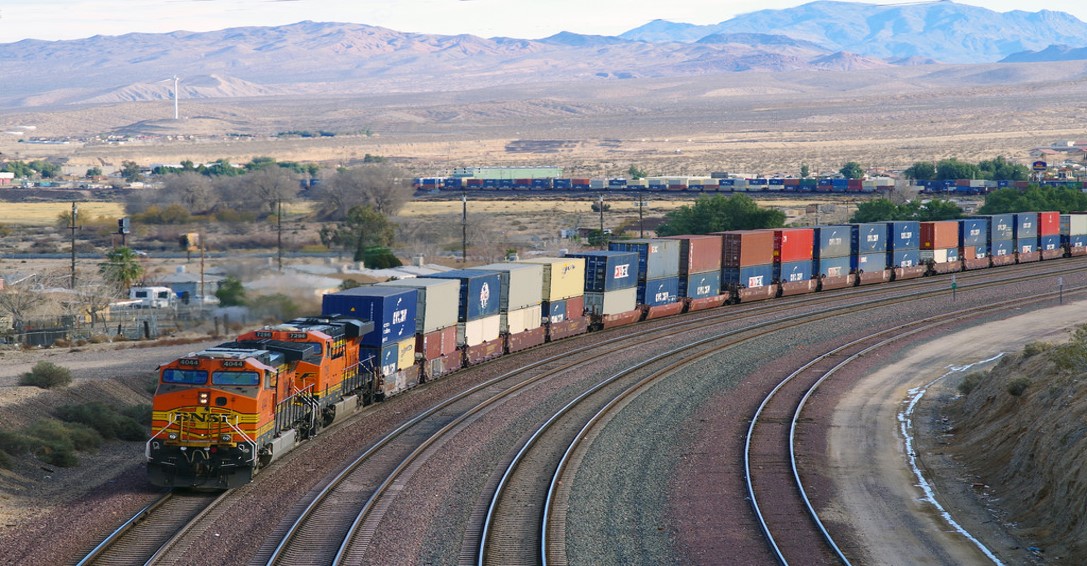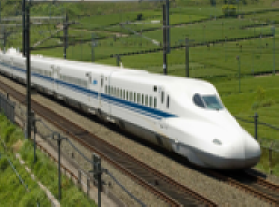Transportation: Rail

The Rail Industry is in a Position to Exploit the Opportunities Created by IIoT
Long before the term IoT was created, railway operators were using M2M technology and data analysis to improve maintenance and performance of assets.
TICT technologies have been employed by railways for many years. Digital freight and passenger car codes, introduced almost 50 years ago are still in use.
Many years ago automatic equipment identification (AEI) tags, installed in North America allowed a train crew to receive a message from a wayside detector, and AEI readers updated a database with passing and directional information.
Subsequently the introduction of Global System for Mobile Communications-Railways (GSM-R) a secure platform for voice and data communication between railway
operational staff became a replacement for incompatible in-track cable and analogue railway radio networks.
The evolution of communication technologies and railway requirements have evolved since the first deployments GSM-R.
The advantages of the latest generation of broadband communication systems (e.g., LTE, 5G, IEEE 802.12ad)
The emergence of Wireless Sensor Networks(WSNs) for the railway environment
GSM-R systems traditionally used for operational voice and data communications are now capable of reliable transmission of video and data for long distances
IIoT has the Potential to Revolutionize the Rail Industry
Although railway operators may have been pioneers, the reality is that the rail industry has barely scratched the surface of what is possible with IIoT.

State-of-the Art IIoT Technologies will revolutionize the railway industry and will allow for confronting the challenges of today
- The appearance of Internet of Things(IoT) led to the development of solutions like rail analytics, and dynamic route scheduling and planning.
- Industrial IoT-based solutions have uncovered new business models that are already impacting the global rail industry.
- Integrated security, asset management, and predictive maintenance to name a few, are expected to improve timely decision-making for issues like safety, scheduling, and system capacity.
- As IIoT continues to evolve, it is bringing greater standardization, openness, and scalability to the information provided to operators such as:
- Insight into how assets are performing, which opens many new possibilities of how to use big data in more creative and effective ways.
IIoT Will Contribute Solutions to Solve the top 5 Rail Industry Challenges
Growth & Capacity: Using AI and Analytics on large data sets, streamed in real-time, IoT systems has the potential to improve: |
|||
|
|
|
|
Reliability, Safety and Security: IIoT sensors and systems embedded in assets and within critical rail operations provides real time information that can: |
|||
|
|
|
|
Streamlined Operations: Large, Real-time data sets using AI and Analytics has the potential to improve: |
|||
|
|
|
|
Customer Experience: IoT real-time analytics has the potential to: |
|||
|
|
|
|
Infrastructure Modernization: |
|||
|
|
|
|


Transportation: Rail

The Rail Industry is in a Position to Exploit the Opportunities Created by IIoT
Long before the term IoT was created, railway operators were using M2M technology and data analysis to improve maintenance and performance of assets.
TICT technologies have been employed by railways for many years. Digital freight and passenger car codes, introduced almost 50 years ago are still in use.
Many years ago automatic equipment identification (AEI) tags, installed in North America allowed a train crew to receive a message from a wayside detector, and AEI readers updated a database with passing and directional information.
Subsequently the introduction of Global System for Mobile Communications-Railways (GSM-R) a secure platform for voice and data communication between railway
operational staff became a replacement for incompatible in-track cable and analogue railway radio networks.
The evolution of communication technologies and railway requirements have evolved since the first deployments GSM-R.
The advantages of the latest generation of broadband communication systems (e.g., LTE, 5G, IEEE 802.12ad)
The emergence of Wireless Sensor Networks(WSNs) for the railway environment
GSM-R systems traditionally used for operational voice and data communications are now capable of reliable transmission of video and data for long distances
IIoT has the Potential to Revolutionize the Rail Industry
Although railway operators may have been pioneers, the reality is that the rail industry has barely scratched the surface of what is possible with IIoT.

State-of-the Art IIoT Technologies will revolutionize the railway industry and will allow for confronting the challenges of today
- The appearance of Internet of Things(IoT) led to the development of solutions like rail analytics, and dynamic route scheduling and planning.
- Industrial IoT-based solutions have uncovered new business models that are already impacting the global rail industry.
- Integrated security, asset management, and predictive maintenance to name a few, are expected to improve timely decision-making for issues like safety, scheduling, and system capacity.
- As IIoT continues to evolve, it is bringing greater standardization, openness, and scalability to the information provided to operators such as:
- Insight into how assets are performing, which opens many new possibilities of how to use big data in more creative and effective ways.
IIoT Will Contribute Solutions to Solve the top 5 Rail Industry Challenges
Growth & Capacity: Using AI and Analytics on large data sets, streamed in real-time, IoT systems has the potential to improve: |
|||
|
|
|
|
Reliability, Safety and Security: IIoT sensors and systems embedded in assets and within critical rail operations provides real time information that can: |
|||
|
|
|
|
Streamlined Operations: Large, Real-time data sets using AI and Analytics has the potential to improve: |
|||
|
|
|
|
Customer Experience: IoT real-time analytics has the potential to: |
|||
|
|
|
|
Infrastructure Modernization: |
|||
|
|
|
|

